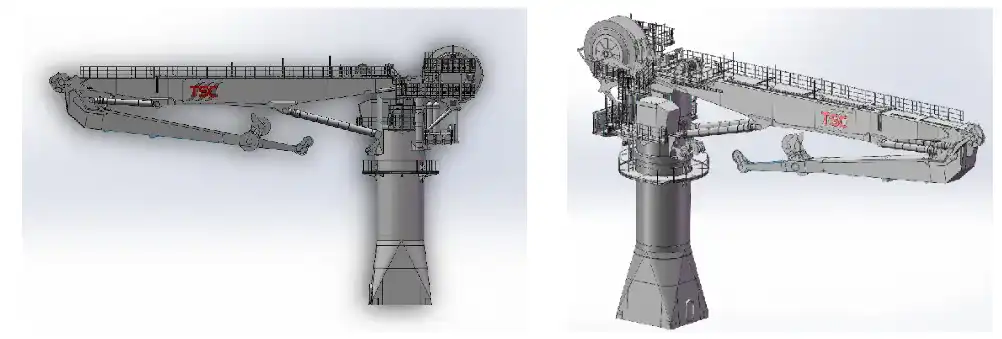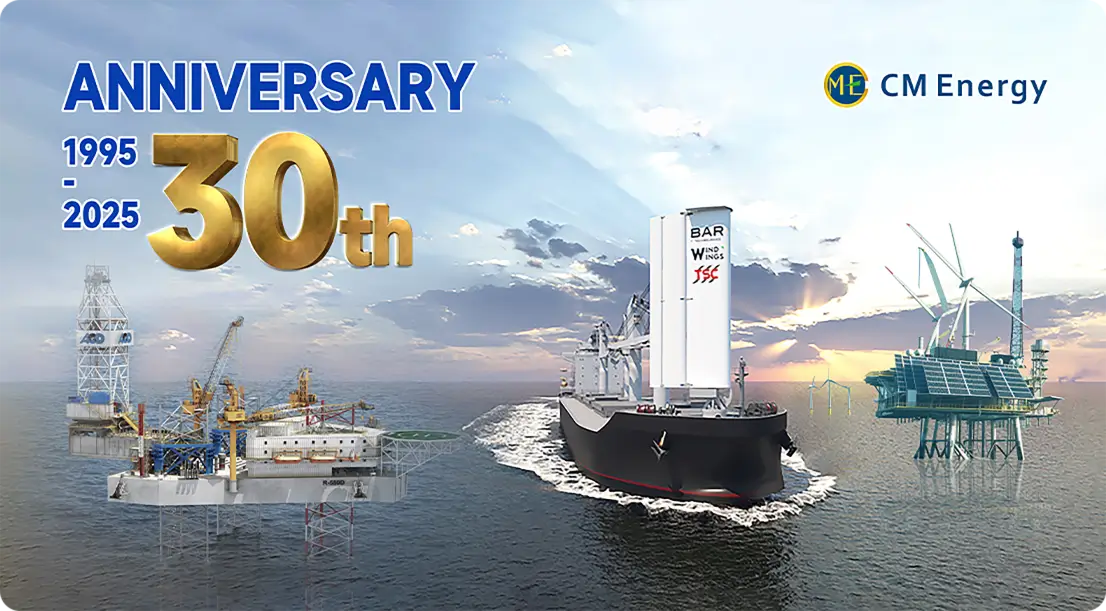Beyond Heave: Roll and Pitch Compensation Explained
While heave compensation has been a standard feature in offshore cranes for some time, the addition of roll and pitch compensation takes crane performance to new heights. This advanced system accounts for the complex, three-dimensional motion of a vessel, ensuring that the load remains stable regardless of sea conditions.
The Mechanics of Multi-Axis Compensation
Roll and pitch compensation work in tandem with heave compensation to create a fully stabilized lifting environment. Sophisticated sensors continuously monitor the vessel's movement across all axes, feeding this data into a high-speed control system. The crane's actuators then respond in real-time, adjusting the position of the boom and winch to counteract these movements.
Applications in Challenging Environments
This technology is particularly valuable in offshore wind farm construction, oil and gas operations, and marine research. It allows for precise positioning of heavy equipment, safe personnel transfers, and delicate underwater operations even in less-than-ideal weather conditions. The ability to work in rougher seas extends operational windows, potentially saving millions in project costs. The integration of AHC Crane technology further enhances these capabilities, ensuring a higher level of stability and efficiency in demanding offshore environments.
Enhancing Precision: 3D Motion Control Technology
At the heart of multi-axis compensation lies advanced 3D motion control technology. This system integrates various components to achieve unprecedented levels of accuracy and responsiveness in AHC Crane operations.
Key Technologies and Principles
- Active Heave Compensation (AHC): AHC is the core technology that compensates for the up-and-down motion of the vessel. Using sensors, it detects vertical movement and activates the crane's systems to counteract this motion, stabilizing the load in real-time.
- 3D Motion Compensator (3DMC): The 3DMC is a retrofit device that can be added to existing cranes, allowing them to compensate for not just heave but also roll and pitch. This provides more comprehensive motion control, enhancing load handling accuracy.
- Advanced Control Algorithms: Algorithms like Model Predictive Control (MPC) and Adaptive Sliding Mode Control (SMC) are used to predict the crane's movements and optimize its response. These algorithms help maintain stability, reduce tracking errors, and improve real-time performance.
- Anti-Pendulum Function: This feature prevents load swinging (pendulation), which is essential for maintaining precision and preventing accidents during offshore operations.
Benefits of the Technology
- Increased Precision: Enhanced load placement accuracy in challenging conditions, crucial for tasks like subsea installation.
- Improved Safety: By controlling swinging loads, the risk of accidents is minimized.
- Enhanced Performance: Reduces hydraulic system stress and improves the overall efficiency of the crane, increasing durability and winch performance.
ROI of Advanced Multi-Axis AHC Systems
Investing in advanced multi-axis AHC systems can yield significant returns for offshore operators. While the initial cost may be higher than traditional crane systems, the long-term benefits often far outweigh this investment.
Operational Efficiency and Uptime
Multi-axis compensated cranes can operate in conditions that would sideline conventional equipment. This extended operational window translates directly into increased productivity and reduced project timelines. For offshore projects where vessel day rates can exceed hundreds of thousands of dollars, even a small increase in workable days can result in substantial cost savings.
Safety Improvements and Risk Reduction
The enhanced stability provided by multi-axis compensation significantly reduces the risk of accidents during lifting operations. This not only protects personnel and equipment but can also lead to reduced insurance premiums and fewer costly incidents. The improved safety profile is particularly valuable in high-stakes offshore environments where the consequences of errors can be severe.
Versatility and Future-Proofing
Advanced AHC Crane systems offer greater versatility, allowing a single crane to perform a wider range of tasks across various sea states. This flexibility can reduce the need for multiple specialized pieces of equipment, streamlining operations and reducing overall fleet costs. Additionally, as offshore operations continue to move into more challenging environments, investing in cutting-edge technology now can future-proof operations against increasingly demanding project requirements.
Conclusion
The evolution of AHC Crane design to incorporate multi-axis compensation marks a significant leap forward in offshore lifting capabilities. By addressing the complex motions of vessels in marine environments, these advanced systems enable safer, more efficient, and more precise operations across a range of industries. As offshore activities continue to expand and face new challenges, the role of multi-axis compensated AHC cranes in ensuring operational success cannot be overstated. For companies looking to maintain a competitive edge in the offshore sector, investing in this technology is not just an option, but a necessity for future-proofing operations and maximizing return on investment.
FAQ
1. What is the main advantage of multi-axis compensation in AHC cranes?
The primary advantage is the ability to maintain load stability and positioning accuracy in all sea conditions by compensating for heave, roll, and pitch movements simultaneously.
2. How does multi-axis compensation improve safety in offshore operations?
It reduces the risk of load swinging or unexpected movements during lifts, enhancing personnel safety and protecting valuable equipment from damage.
3. Can multi-axis AHC cranes operate in all weather conditions?
While they significantly extend the operational window, there are still extreme conditions where operations must be suspended for safety reasons. However, these cranes can operate safely in much rougher seas than traditional cranes.
Experience Unmatched Stability with CM Energy's AHC Cranes
CM Energy, through our brand TSC, stands at the forefront of AHC Crane technology. Our multi-axis compensated cranes offer unparalleled stability and precision for your offshore operations. With our advanced systems, you can extend your operational windows, enhance safety, and boost productivity. Choose CM Energy for reliable, efficient, and future-proof AHC Crane solutions that deliver exceptional return on investment. Contact us today at info.cn@cm-energy.com to discover how our AHC Cranes can transform your offshore projects.
TSC: Your trusted AHC Crane supplier for cutting-edge offshore lifting solutions.
References
- Johnson, M. (2023). "Advancements in Multi-Axis Compensation for Offshore Cranes". Journal of Marine Engineering, 45(3), 278-295.
- Smith, A. & Brown, T. (2022). "The Impact of 3D Motion Control on Offshore Operations". Offshore Technology Review, 18(2), 112-128.
- Maritime Safety Institute. (2024). "Safety Improvements in Offshore Lifting: A Five-Year Analysis". Annual Safety Report, 89-103.
- Chen, L. et al. (2023). "Economic Benefits of Advanced AHC Systems in Deep-Sea Operations". International Journal of Offshore Economics, 7(4), 412-427.
- Williams, R. (2024). "Next-Generation Sensor Integration for Marine Cranes". Sensors in Maritime Applications, 29(1), 67-82.
- Offshore Energy Association. (2023). "Industry Trends: The Rise of Multi-Axis Compensated Cranes". Annual Market Report, 156-170.


